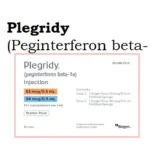SGLT2 inhibitors have been approved by the FDA for the treatment of Diabetes Type 2. They are associated with significant weight loss even when used in non-diabetics for indications other than diabetes.
The four commonly used SGLT2 inhibitors are:
The only indication of SGLT2 inhibitors other than diabetes is heart failure with reduced ejection fraction (HFrEF) and patients with established cardiovascular disease regardless of the ejection fraction (HFpEF).
However, only Jardiance and Farxiga are approved for the treatment of heart failure in non-diabetic individuals.
Canagliflozin and Ertugliflozin are only indicated for the treatment of diabetes mellitus type 2.
| You may also like to read: |
Why Obesity and Diabesity is a problem?
Obesity and being overweight are significant risk factors for several illnesses, including cancer, hypertension, dyslipidemia, type 2 diabetes, heart disease, osteoarthritis, obstructive sleep apnea, and fatty liver disease.
Improved glycemic control and insulin homeostasis can be attained with moderate weight loss (5% of body weight), which can also reduce the cardiovascular risk factors associated with being overweight or obese [Ref].
In 2016, the World Health Organization claimed that 650 million persons worldwide suffered from obesity, making up more than 1.9 billion adults who were overweight and that over 2.8 million deaths per year were related to being overweight or obese [Ref].
| You may also like to read: |
FDA-Approved Weight Loss Medications:
Losing weight is sometimes very difficult. One has to struggle very hard to lower body weight by at least 10% of the baseline body weight.
For weight loss, clinical practice guidelines recommend lifestyle therapies such as food, exercise, and behavioral adjustment.
When lifestyle interventions fail, medical therapies may be added to accelerate the weight loss efforts and not lose hope.
The five weight loss medications approved by the FDA are:
- Orlistat (Xenical)
- Qsymia (Phentermine/ Topiramate)
- Contrave (Bupropion/ Naltrexone)
- Saxenda (Liraglutide)
- Wegovy (Semaglutide)
Lorcaserin was approved for weight loss but because of its association with certain cancers, it has been withdrawn from the market.
Mounjaro (Tirzepatide) approval as a weight loss drug is pending. It is thought to be associated with the most weight loss compared to all the approved weight loss medications.
| You may also like to read: |
SGLT2 Inhibitors for Weight Loss in Non-Diabetics!
SGLT2 inhibitors are FDA-approved for the treatment of diabetes. However, they may be used in non-diabetics only in patients with heart failure.
SGLT-2 inhibitors have been shown to have significant impacts on body weight in people with diabetes mellitus and may be utilized as prospective treatments for obesity.
The ability to reduce body weight is consistently observed in individuals taking SGLT2 inhibitors, but this weight loss is moderate due to counter-regulatory mechanisms striving to maintain body weight [Ref].
A meta-analysis evaluated the role of Empagliflozin, Dapagliflozin, and Canagliflozin in obese non-diabetic individuals.
The findings revealed a mean weight loss of 1.74 kg in the active treatment group vs patients who received a placebo.
| You may also like to read: |
Effects of SGLT2 on adiposity and body weight
SGLT2 inhibitors directly reduce body weight by causing the kidneys to excrete glucose, which results in calorie reduction.
Inhibiting SGLT2 works in a glucose-dependent manner, resulting in the elimination of approximately 60-100 g of glucose per day in the urine.
Weight loss with SGLT2 inhibitor therapy has been consistently observed in many studies, regardless of whether patients are taking SGLT2 inhibitors alone or in combination with other glucose-lowering therapies.
SGLT2 inhibitors, however, significantly reduce weight compared to what would be anticipated from the energy voided by glycosuria because they promote an adaptive increase in energy intake, including compensatory increases in appetite and caloric intake [Ref].
Therefore, the most efficient method for significant weight loss and addressing the counter-regulatory systems that maintain body weight may be to combine SGLT2 inhibitors with medications that work by alternative mechanisms [Ref]
Few studies have examined how SGLT2 inhibitors affect weight loss in obese people without diabetes.
In obese people without diabetes, co-administration of SGLT2 inhibitors (Dapagliflozin) and GLP1-RA (Exenatide) results in a 4.5 kg reduction in body weight after 24 week of treatment that is maintained for up to 1 year ( 5.7 kg) [Ref].
Most crucially, rather than lean tissue, weight loss is mostly caused by a decrease in subcutaneous and visceral adipose tissue.
| You may also like to read: |
How SGLT2 Inhibitors can result in weight loss?
SGLT2 inhibitor-induced glycosuria decreases plasma glucose and insulin levels and boosts fasting and post-meal glucagon concentrations in people with obesity without diabetes.
Lipid storage is mobilized as a result of hormonal changes and the drop in blood glucose concentration [Ref].
This causes modifications in the way energy substrates are used, promoting the use of lipids as an energy source.
Lipolysis increases in the adipose tissue when the portal insulin-to-glucagon ratio is lower, releasing non-esterified fatty acids that are then converted to ketone bodies in the liver by mitochondrial beta-oxidation and ketogenesis. This results in a metabolic state that resembles a protracted fast [Ref].
Additionally, SGLT2 inhibitors have been demonstrated to promote brown adipose tissue and decrease white adipose tissue inflammation [Ref].
Since low-grade chronic inflammation in adipose tissue is a key mediator in the emergence of obesity-related problems like insulin resistance and T2DM, reducing inflammation in adipose tissue would be especially crucial in obese individuals [Ref].
| You may also like to read: |
Effectiveness of SGLT2 inhibitors for weight loss in non-diabetics:
By blocking the primary glucose transporter in the renal proximal tubules, SGLT-2 inhibitors can lower the threshold for glucose excretion in renal urine, which lowers blood glucose levels [Ref].
Additionally, this process causes a little amount of weight loss and partial heat loss.
The early stage of weight loss may be caused by fluid loss caused by mild osmotic diuresis. This influence fades with time, so in the later stages, weight loss is primarily caused by fat mass loss.
A meta-analysis evaluated and compared the weight loss effects of different SGLT2 inhibitors in obese non-diabetic individuals. The results are tabulated here [Ref]:
SGLT2 Inhibitors | Weight | BMI |
| Dapagliflozin | -3 kg | – 0.2 |
| Canagliflozin | -1.9 to -2.8 kg | -0.7 to -1 |
| Sergliflozin | -1.5 to -1.7 kg | -2 |
| Remogliflozin | -6 to -7.6 kg | -2.4 |
Compared to placebo, Canagliflozin and Remogliflozin resulted in significant weight loss in obese non-diabetic patients. The results were statistically significant.
Dapagliflozin and Sergliflozin also resulted in greater weight loss compared to the placebo treatment, the results were not statistically significant.
The results of anthropometric measurements are also mentioned here:
Changes in Waist Circumference | Hip Circumference | Waist Hip ratio | |
| Dapagliflozin | -1.8 | – | – |
| Canagliflozin | -1.4 – -2.9 | -2 | 0.003 – -0.008 |
| Sergliflozin | -4.6 | -1.9 | – |
| Remogliflozin | -4.2 | -3 | – |
| You may also like to read: |
Risks associated with SGLT2 Inhibitors:
The danger of hypoglycemia should be considered while administering SGLT-2 inhibitors to non-diabetics. This class of anti-hyperglycemic medications is used to treat diabetic patients.
In line with information compiled by the US Food and Drug Administration, some research findings indicated that SGLT-2 inhibitors had no impact on the risk of hypoglycemia in the population who was overweight or obese but not diabetic [Ref].
Treatment with SGLT-2 inhibitors is associated with a higher risk of vaginal and urinary tract infections, which may be directly linked to the medicines’ mode of action.
Most of these infections range from mild to moderate. SGLT-2 inhibitors raise the amount of glucose in the urine.
The setting for glucosuria can encourage bacterial growth and reproduction, raising the risk of infections in the vaginal area and urinary tract [Ref].
| You may also like to read: |
In Summary:
SGLT2 inhibitors have been studied for weight loss in non-diabetics who are obese. They are associated with significant weight loss compared to placebo treatment.
They may be as effective or even more effective in some of the FDA-approved weight loss medicines like Orlistat.
In addition, SGLT2 inhibitors also have added cardiovascular and renal protective effects compared to other weight loss-approved drugs.




